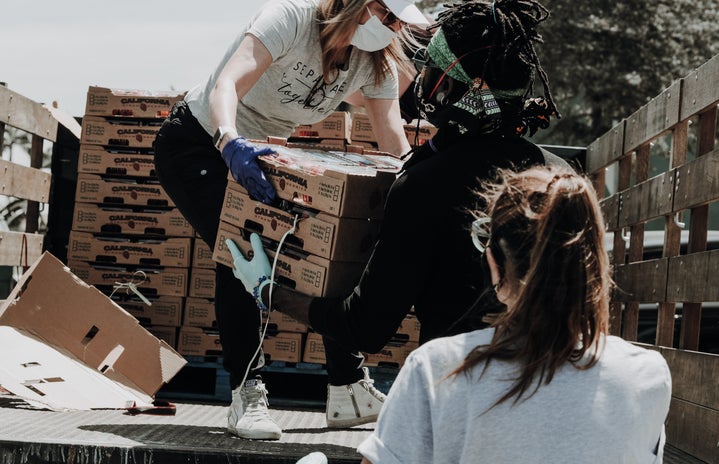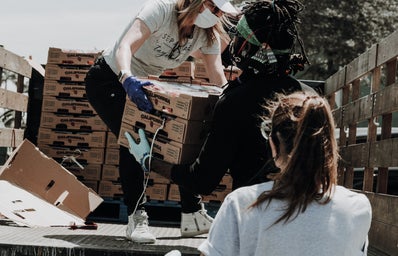Through my public health coursework, I have learned about the many health disparities that are present around the world and more specifically, in our surrounding community. These disparities present themselves most obviously in people of color and minorities. This is something that struck me as I have realized that most people who are facing a lack of care are people who do not have access to it and are of lower socioeconomic status. I have seen this phenomenon personally through the different volunteering opportunities that I am involved in.
One such experience that truly stuck with me was through my volunteering at the Health Resource Center. While volunteering at the Health Resource Center, a free health clinic run by various health professionals from Saint Louis University, I witnessed firsthand the disparities present in the community. I remember a specific experience that stuck with me, and it is one of the reasons that I hope to become a physician for the underserved in the future. This patient came to the clinic and was denied health care everywhere due to a misfiling with her insurance, which ultimately led her to become uninsured. Her intersectionality of being a woman, who is Black, and uninsured led her to being denied care at more prominent hospitals in the surrounding area. Women, especially Black women, tend to face a lack of care.
While checking her out from her visit, I had a one-on-one conversation with her and understood her point of view. This allowed me to see the lack of medical care provided to her and various other individuals who have come to this clinic. As an aspiring physician, this taught me that I need to take a step back and make sure to understand my patient’s entire person. This also showed me the lack of health education that many individuals have, and I worked with her to find resources to understand her choices for health care. Although patients are treated by volunteer doctors at the Health Resource Center, it is not always the most ideal and quality health care. This clinic often is their last resort option, and they would much rather go someplace that is potentially closer to their homes, but usually in rural or underprivileged communities, there aren’t many hospitals and or clinics around. This means the nearest hospital or clinic might be a thirty minute drive away. Unfortunately, we live in a country full of institutions that make receiving health care more difficult than necessary.
This volunteering experience strengthened my understanding of systemic racism, especially as seen in the medical field. Systemic racism is rooted so deep in our culture that oftentimes it can be second nature to many people. It happens without people realizing or understanding what was said.
Something that really stuck out to me was that the U.S. has one of the highest rates for maternal mortality despite the many initiatives that are put in place. This is something that shocked me as the United States spends so much money in terms of health care, yet some people are still unable to get access to care, which truly exemplifies the disparities that are present in our communities. According to a medicine textbook by Lois N. Magner, health care advocates estimate that 25%–30% of American women do not have access to prenatal care. I can recall one of my colleagues mentioning that while volunteering in St. Louis she had noticed a Black woman bleeding into her catheter and tried to inform the nurse, but the nurse did not help her because of her race and overlooked the issue.
Learning about this made me realize that I wanted to use my voice to actively work to change this within medicine. I joined the startup project, Advocacy in Maternal Health (AIM). This organization has grown into a non-profit in the state of Missouri, which is led by a couple of students, including myself. Our goal is to decrease health disparities and create an initiative to improve the health of the pregnant populations in St. Louis. We hope to do this through providing access to holistic and quality maternal health care services. More specifically, we hope to reduce maternal mortality rates, specifically for pregnant individuals, by implementing a navigator model structure. A navigator model essentially helps patients communicate with health care providers so they get information they need to make decisions about their health care. They also help patients with financial, legal and/or social support. We decided to use this approach to guide mothers to valuable resources in the area including, but not limited to, maternal health clinics, transportation services, doulas, social services, baby formula and diaper banks. Our project not only aims to provide access to more resources for pregnant women but also serves as a gateway to long-term, holistic perinatal care.
Through my involvement with this non-profit, I have realized that although we want to help our community, the first step in doing that is understanding ourselves. It is important to reflect on my own experiences, which will allow me to be more open-minded. During my time in this organization, I have had to make myself vulnerable, and as an executive board member, I, along with my fellow members, have had to acknowledge that none of us are Black women, so we can’t talk about the same experiences as them. AIM wants to bring Black voices to the table, and the best way for us to start this was through community outreach partnering with local grassroots organizations working to solve this issue already in the community.
During my time with this organization, I have been reminded of an idea that I learned in my service class. Patrick Saint-Jean, a Jesuit, said in order to best help others we must look at the “state of health and health, or wholeness and well-being, both individually and also within the entire network of relationships.” This is something I aspire to put into action as I work to help my community. We cannot achieve individual health and well-being if our relationships with others are unhealthy or unjust. It is important to take that extra step and understand those around me by building a relationship with them. The Jesuit ideal of “cura personalis” and the values of Saint Louis University tie in well with this as we need to meet people where they are at making sure to understand their backgrounds whether that be sexual orientation, religion or socioeconomic status.
I hope my volunteer experiences and being part of AIM will allow me to better understand the needs of my community and work towards equality within the medical field. Through reflection, continued service, and community interaction through AIM, I hope to work towards breaking past the SLU bubble that we place ourselves in as it is comforting and continue to help those who are underserved. Sometimes all it takes is stepping out of your comfort zone and making yourself vulnerable: it can truly make all the difference. I hope you too find an experience that challenges and furthers your passion.


